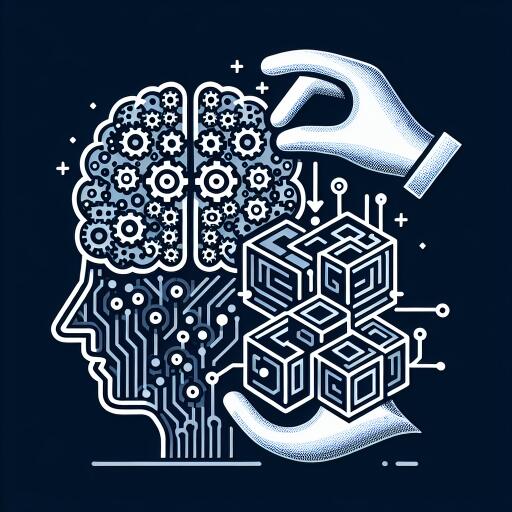Enhancing GenAI Applications With KubeMQ
As the adoption of Generative AI (GenAI) surges across industries, organizations are increasingly leveraging Retrieval-Augmented Generation (RAG) techniques to bolster their AI models with real-time, context-rich data. Managing the complex flow of information in such applications poses significant challenges, particularly when dealing with continuously generated data at scale. KubeMQ, a robust message broker, emerges as a solution to streamline the routing of multiple RAG processes, ensuring efficient data handling in GenAI applications.
To further enhance the efficiency and scalability of RAG workflows, integrating a high-performance database like FalkorDB is essential. FalkorDB provides a reliable and scalable storage solution for the dynamic knowledge bases that RAG systems depend on, ensuring rapid data retrieval and seamless integration with messaging systems like KubeMQ.
RAG is a paradigm that enhances generative AI models by integrating a retrieval mechanism, allowing models to access external knowledge bases during inference. This approach significantly improves the accuracy, relevance, and timeliness of generated responses by grounding them in the most recent and pertinent information available.
In typical GenAI workflows employing RAG, the process involves multiple steps. Scaling these steps, especially in environments where data is continuously generated and updated, necessitates an efficient and reliable mechanism for data flow between the various components of the RAG pipeline.
In scenarios such as IoT networks, social media platforms, or real-time analytics systems, new data is incessantly produced, and AI models must adapt swiftly to incorporate this information. Traditional request-response architectures can become bottlenecks under high-throughput conditions, leading to latency issues and degraded performance.
KubeMQ manages high-throughput messaging scenarios by providing a scalable and robust infrastructure for efficient data routing between services. By integrating KubeMQ into the RAG pipeline, each new data point is published to a message queue or stream, ensuring that retrieval components have immediate access to the latest information without overwhelming the system. This real-time data handling capability is crucial for maintaining the relevance and accuracy of GenAI outputs.
KubeMQ offers a variety of messaging patterns — including queues, streams, publish-subscribe (pub/sub), and Remote Procedure Calls (RPC) — making it a versatile and powerful router within a RAG pipeline. Its low latency and high-performance characteristics ensure prompt message delivery, which is essential for real-time GenAI applications where delays can significantly impact user experience and system efficacy.
Moreover, KubeMQ’s ability to handle complex routing logic allows for sophisticated data distribution strategies. This ensures that different components of the AI system receive precisely the data they need, when they need it, without unnecessary duplication or delays.
While KubeMQ efficiently routes messages between services, FalkorDB complements this by providing a scalable and high-performance graph database solution for storing and retrieving the vast amounts of data required by RAG processes. This integration ensures that as new data flows through KubeMQ, it is seamlessly stored in FalkorDB, making it readily available for retrieval operations without introducing latency or bottlenecks.
As GenAI applications grow in both user base and data volume, scalability becomes a paramount concern. KubeMQ is scalable, supporting horizontal scaling to accommodate increased load seamlessly. It ensures that as the number of RAG processes increases or as data generation accelerates, the messaging infrastructure remains robust and responsive.
Additionally, KubeMQ provides message persistence and fault tolerance. In the event of system failures or network disruptions, KubeMQ ensures that messages are not lost and that the system can recover gracefully. This reliability is critical in maintaining the integrity of AI applications that users depend on for timely and accurate information.
Implementing custom routing services for data handling in RAG pipelines can be resource-intensive and complex. It often requires significant development effort to build, maintain, and scale these services, diverting focus from core AI application development.
By adopting KubeMQ, organizations eliminate the need to create bespoke routing solutions. KubeMQ provides out-of-the-box functionality that addresses the routing needs of RAG processes, including complex routing patterns, message filtering, and priority handling. This not only reduces development and maintenance overhead but also accelerates time-to-market for GenAI solutions.
KubeMQ offers multiple interfaces for interacting with its message broker capabilities. This flexibility allows developers to choose the most appropriate method for their specific use case, simplifying the architecture and accelerating development cycles. A single touchpoint for data routing streamlines communication between different components of the RAG pipeline, enhancing overall system coherence.
The code example showcases how to build a movie information retrieval system by integrating KubeMQ into a RAG pipeline. It sets up a server that ingests movie URLs from Rotten Tomatoes to build a knowledge graph using GPT-4. Users can interact with this system through a chat client, sending movie-related queries and receiving AI-generated responses. This use case demonstrates how to handle continuous data ingestion and real-time query processing in a practical application, utilizing KubeMQ for efficient message handling and inter-service communication within the context of movies.
Integrating KubeMQ into RAG pipelines for GenAI applications provides a scalable, reliable, and efficient mechanism for handling continuous data streams and complex inter-process communications. By serving as a unified router with versatile messaging patterns, KubeMQ simplifies the overall architecture, reduces the need for custom routing solutions, and accelerates development cycles.
Furthermore, incorporating FalkorDB enhances data management by offering a high-performance knowledge base that seamlessly integrates with KubeMQ. This combination ensures optimized data retrieval and storage, supporting the dynamic requirements of RAG processes.
The ability to handle high-throughput scenarios, combined with features like persistence and fault tolerance, ensures that GenAI applications remain responsive and reliable, even under heavy loads or in the face of system disruptions.
By leveraging KubeMQ and FalkorDB, organizations can focus on enhancing their AI models and delivering valuable insights and services, confident that their data routing infrastructure is robust and capable of meeting the demands of modern AI workflows.










